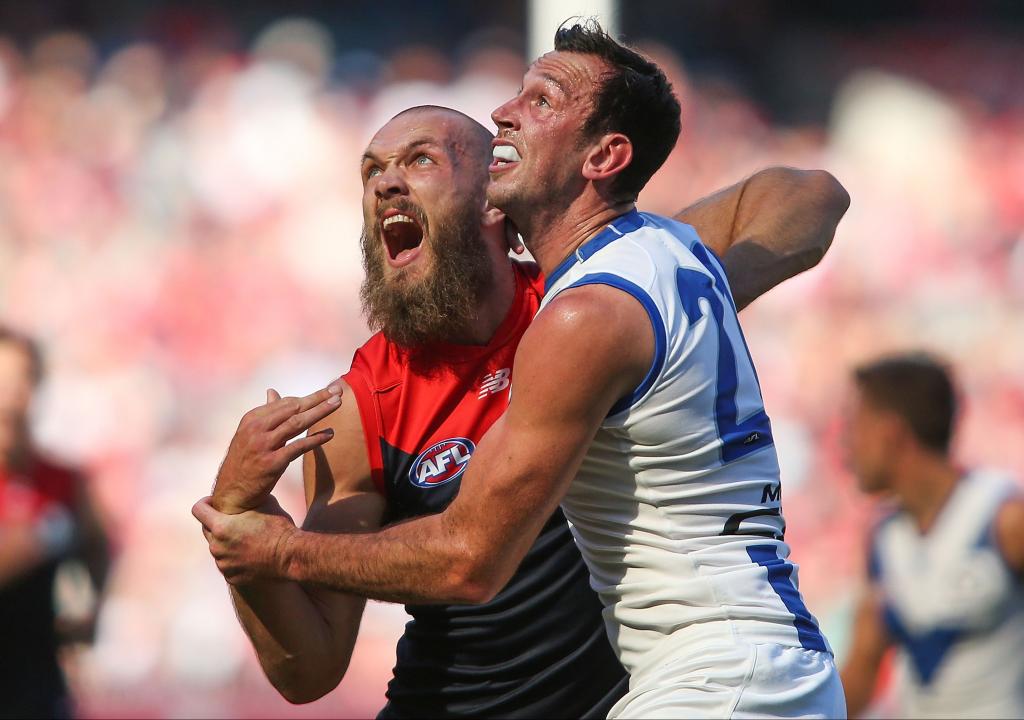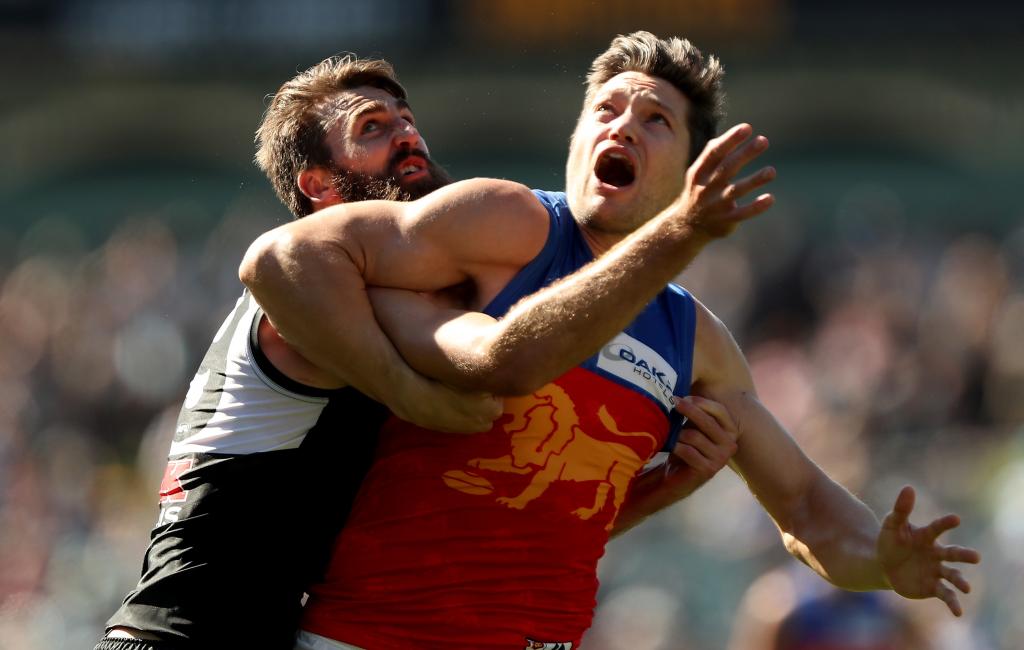THE BEST ruckmen have never been more valuable or, perhaps, better.
An extraordinary round of solo ruck performances across the weekend highlighted the AFL's big men riches – and sparked mass discussion about their resurgence.
It came despite last year's All Australian ruckman Paddy Ryder, the athletic modern archetype for the position, being on the shelf recovering from Achilles soreness.
Today's ruckman has never been better at locating his midfielders with a tap, boasts excellent endurance and brute strength, and plays with the expectation he will get his hands dirty at ground level.
Exhibit A on the latter: Nic Naitanui, West Coast's energetic, bulldozer big man who is back on the field after missing all of last season recovering from a knee injury.
WATCH: Nic Nat takes Cat down a peg
The days of single-digit disposal tallies being acceptable are mostly in the rearview mirror, too.
Things have, of course, changed dramatically for ruckmen, who generally enter battle without a genuine back-up as teams prioritise an extra runner over a second tall.
Among the sidekicks to contest a centre bounce this year are Marcus Bontempelli (193cm), Shaun Grigg (190cm), Dean Towers (189cm), Jacob Townsend (187cm) and James Harmes (185cm).
For comparison's sake, the average height of this year's top 10 ruckmen, in total hit-outs, is 203.2cm.
The AFL's banishing of the 'third man up' and introduction of a nomination system ahead of last season also had an effect, leaving the sport's gladiators to largely go it alone against their direct opponent.
A club's No.1 ruckman this year spends, on average, 83 per cent of a game on the ground, 76 per cent of his time in the ruck and wins 80 per cent of his side's hit-outs.
The corresponding figures in 2007 were 71, 61 and 59.
Game trends have also impacted ruck statistics, with stoppage numbers ranging wildly since Champion Data began counting them in 1999.
They dipped as low as 47.6 a game in 2006, were as high as 70.7 in 2015 but are back at 58.6 this year – almost identical to 2004, when there were 58.
So how do the averages for the top 10 hit-out winners in 2004 compare to this season's crop?
We saw two of the game's best big men, Collingwood's Brodie Grundy and Carlton's Matthew Kreuzer, go head-to-head on Friday night.
Then Max Gawn, of Melbourne, took on Kangaroo Todd Goldstein the next day in a match-up of the 2016 and 2015 All Australians.
Brisbane's Stefan Martin amassed video game numbers (30 disposals, 49 hit-outs and seven tackles) in his demolition job of Port Adelaide's makeshift ruck division in Ryder's absence.
It was a similar story for Sydney's Callum Sinclair, who had his way with the Giants after Rory Lobb went down with a knee problem in the second quarter.
Gawn (10), Martin (nine), Sinclair (eight) and Grundy (seven) combined for 34 AFL Coaches' Association votes out of a possible 40 in round three, such was their influence on their respective matches.
COACHES' VOTES: The big men dominate in round three
Max Gawn had the better of his battle with Todd Goldstein in round three. Picture: AFL Photos
This also highlights how much it can backfire on teams when they take just one recognised ruckman into a match and something goes wrong.
Aaron Sandilands and Sam Jacobs each received two votes and Ben McEvoy scored one in other games, while Naitanui was stiff not to get any recognition for his heroics against Geelong.
Some of these guys came at a bargain-basement price.
Gawn, Goldstein, Toby Nankervis and Lobb were drafted in the second or third rounds and Jarrod Witts in the fourth, while Sandilands, Sinclair, Jacobs and Sam Naismith started as rookies.
Martin and Essendon's Tom Bellchambers were pre-season selections.
But worth mentioning is that Kreuzer, Naitanui, Ryder, Grundy, McEvoy, Billy Longer and the Western Bulldogs' impressive young ruckman Tim English were all first-round picks.
Three of them are at different clubs now, but they offer proof that shying away from big men early in the draft could be a greater mistake than taking the risk.
Especially in the modern AFL.
Stefan Martin (right) dominated an understrength Port Adelaide ruck division. Picture: AFL Photos
The record Geelong blemished
Geelong has racked up all sorts of obscene statistics as one of the powerhouses of the modern era, but one of those came crashing down on Sunday.
The Cats were in front at three-quarter time on 54 occasions between 2014 and 2018 without a loss, although there were two draws.
It was unlucky No.55, with Geelong's effort to transform a 32-point half-time deficit against West Coast into a five-point three-quarter time advantage going to waste.
The Eagles kicked seven of the 10 goals in the final term to charge over the top by 15 points.
The last time the Cats lost when leading at three-quarter time was the 2013 preliminary final against Hawthorn, when they coughed up a 20-point lead to go down by five points.
Loose-checking Bombers pay price
Essendon's shock defeat to the Western Bulldogs had many causes, but one of the major ones was the ease with which Luke Beveridge's men maintained possession.
The Bulldogs accumulated an incredible 152 marks (the League average this year is 89.9), which is the most the Bombers have ever conceded and the sixth-most the Bulldogs have ever taken.
Twenty-three of those were marks inside 50.
It's little wonder Essendon tumbled to a 21-point loss to their previously winless opposition.





